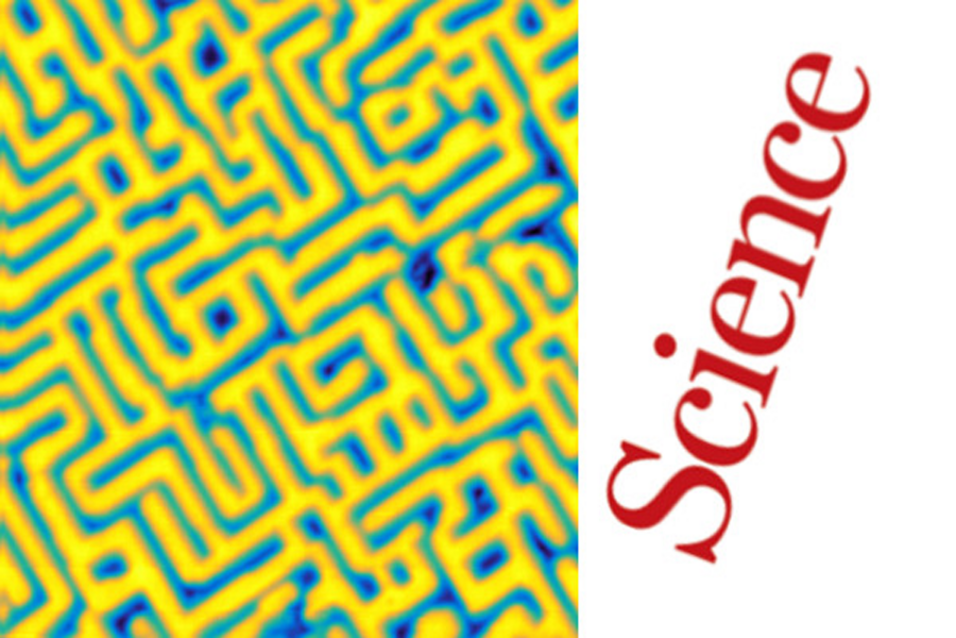The stacking of alternating charged planes in ionic crystals creates a diverging electrostatic energy—a “polar catastrophe”—that must be compensated at the surface. We used scanning probe microscopies and density functional theory to study compensation mechanisms at the perovskite potassium tantalate (KTaO3) (001) surface as increasing degrees of freedom were enabled. The as-cleaved surface in vacuum is frozen in place but immediately responds with an insulator-to-metal transition and possibly ferroelectric lattice distortions. Annealing in vacuum allows the formation of isolated oxygen vacancies, followed by a complete rearrangement of the top layers into an ordered pattern of KO and TaO2 stripes. The optimal solution is found after exposure to water vapor through the formation of a hydroxylated overlayer with ideal geometry and charge.
Science 2018, Vol. 359, Issue 6375, pp. 572-575, DOI: 10.1126/science.aar2287

